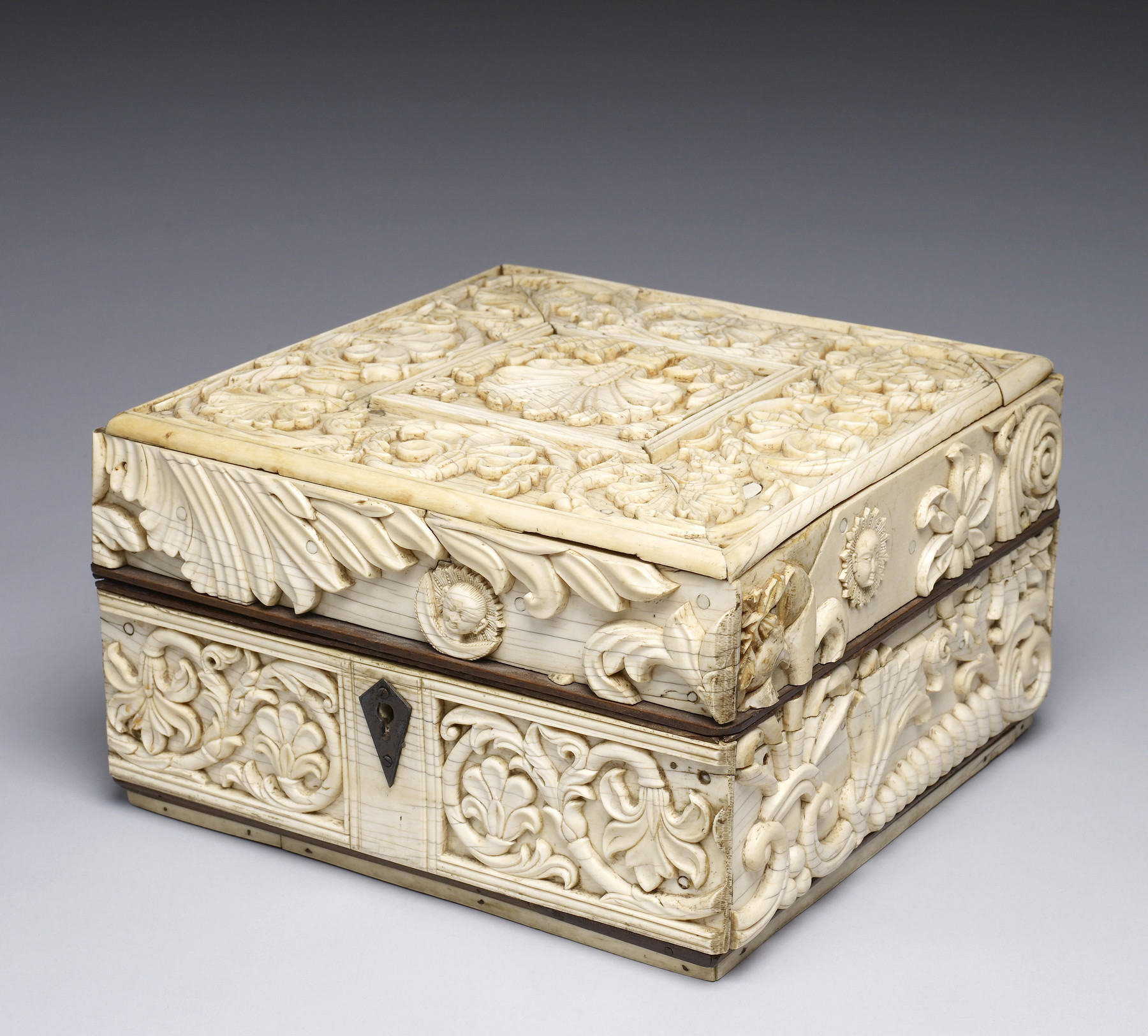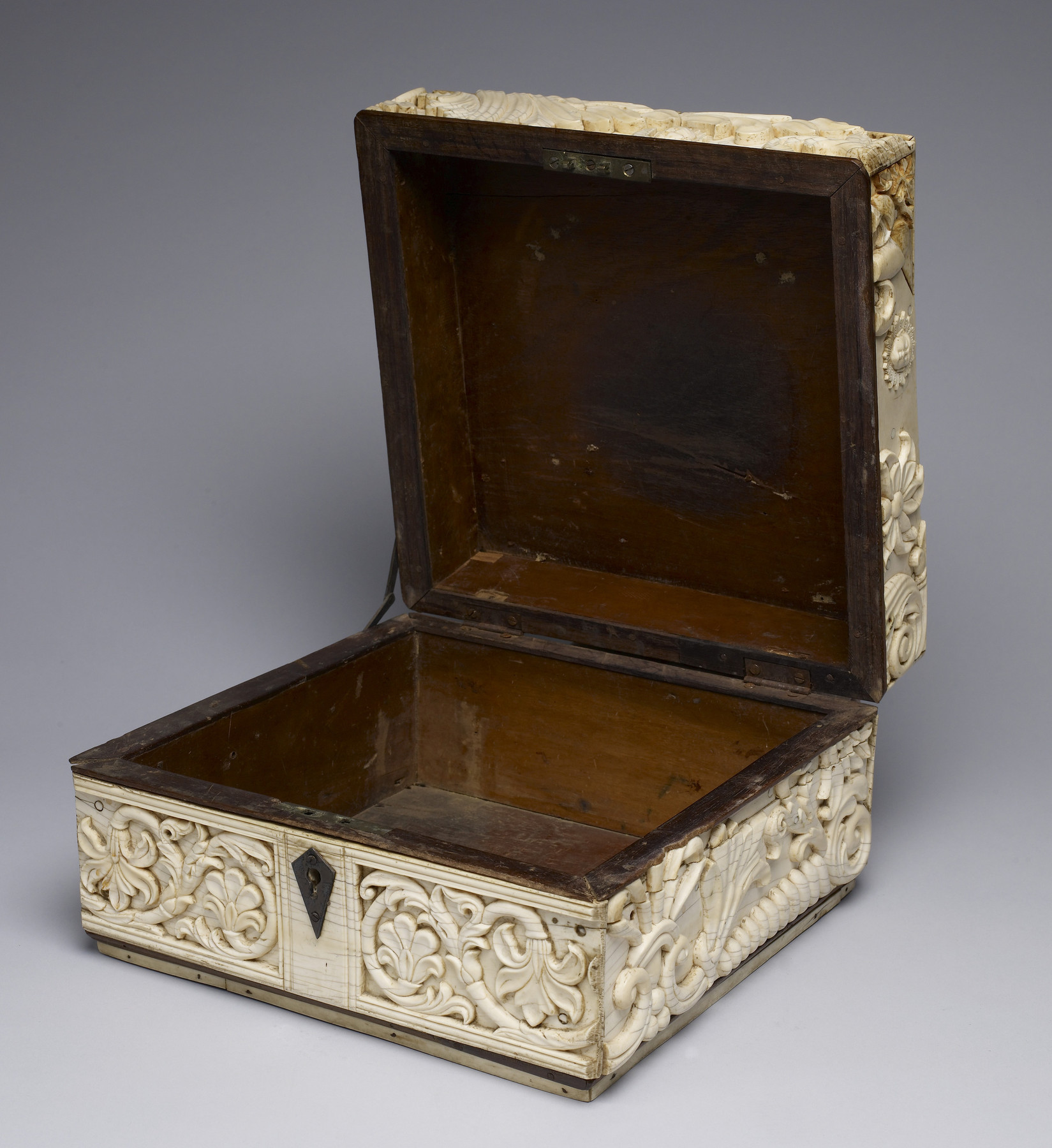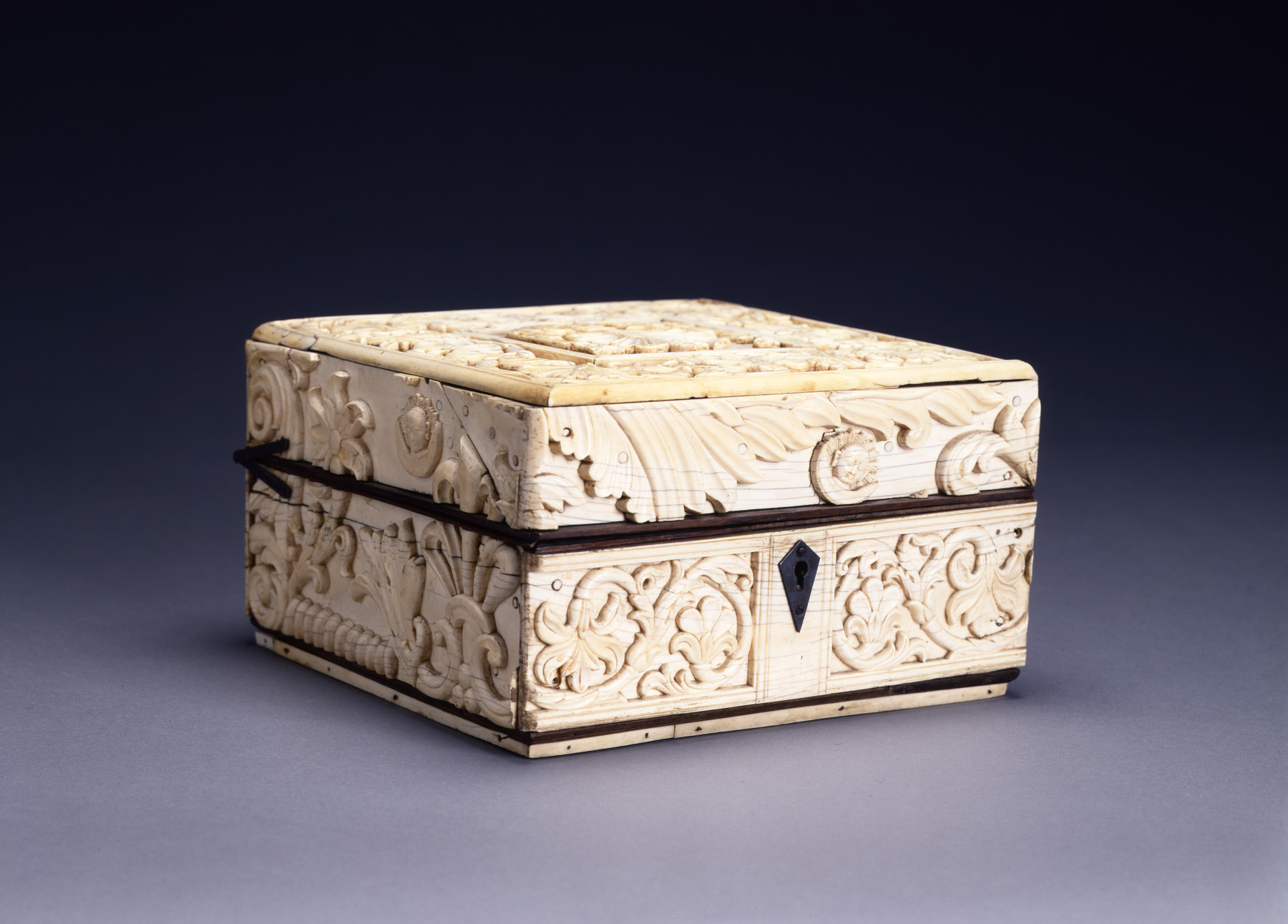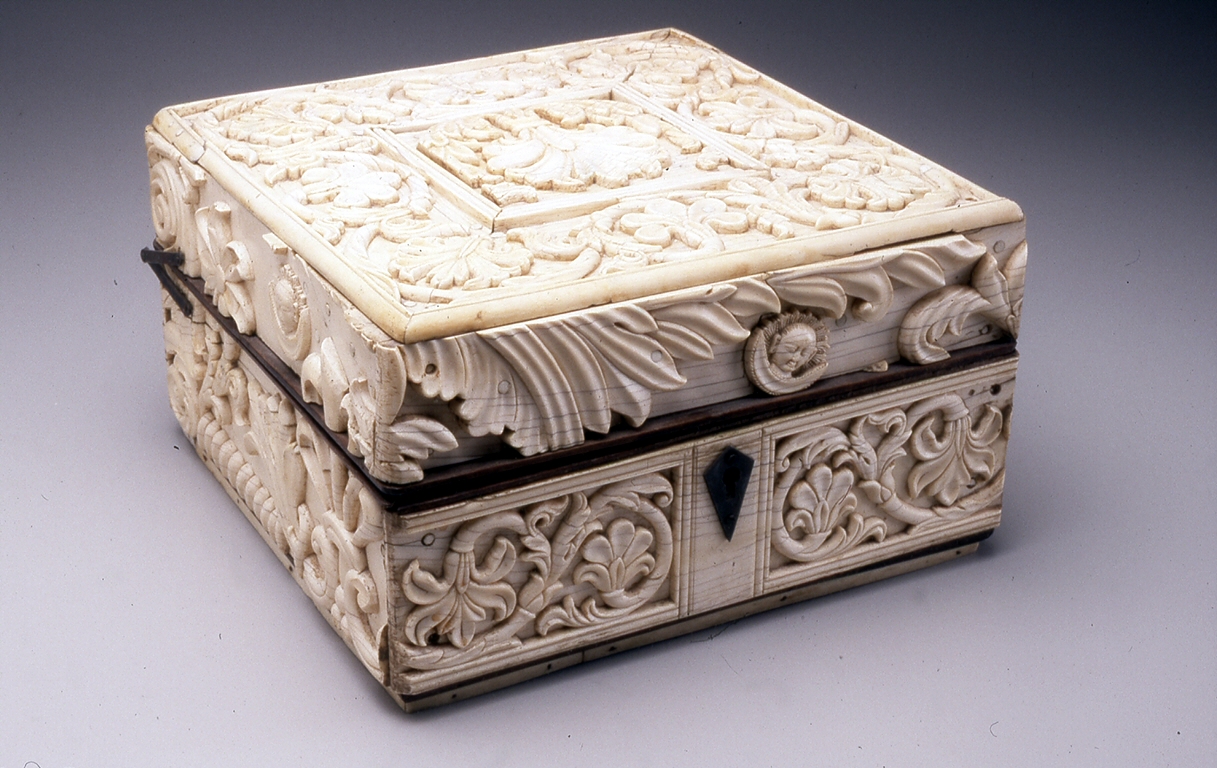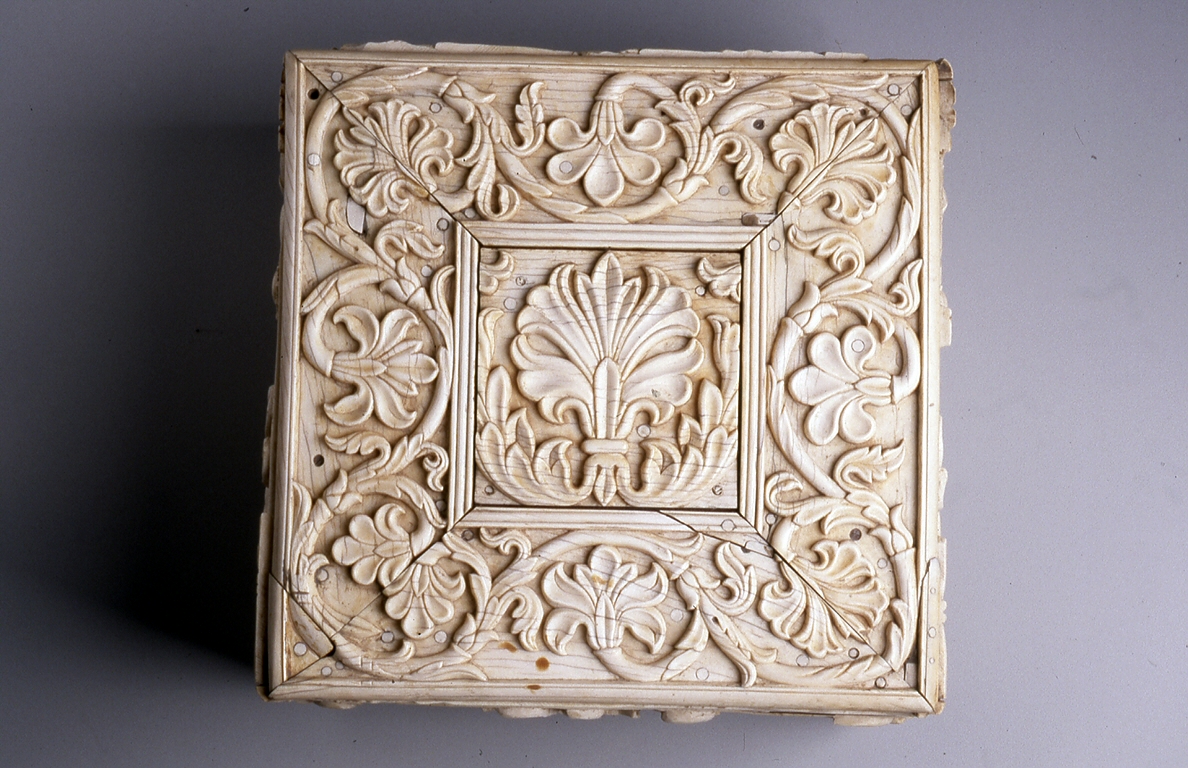Box with Vegetal Forms
(India, Nepal, and Tibet)
This ivory box is a pastiche of several different carved panels. While one cannot be certain when it was put together, the panels probably date from the 17th century. Even though the side panels do not seem to match and have different designs, the quality of the deep carving is of a uniformly high standard. Almost all the motifs are vegetal in nature, consisting of boldly delineated rhizomes or scrolling vines with flowers and acanthus leaves. The only segment that has integrity and harmony of design is the top of the lid, which, along the bottom front panel and keyhole, may have been part of the original box. Although not a religious object, this box reflects an interest in flora similar to representations of nature deities. It is possible that the original box was carved in northern India for an affluent Muslim patron, perhaps crafted for a noble lady to store her jewelry and personal effects.
Provenance
Provenance (from the French provenir, 'to come from/forth') is the chronology of the ownership, custody, or location of a historical object. Learn more about provenance at the Walters.
John and Berthe Ford, Baltimore [date and mode of acquisition unknown]; Walters Art Museum, 2002, by gift.
Geographies
India (Place of Origin)
Measurements
H: 6 7/8 x W: 11 3/4 x D: 11 1/2 in. (17.5 x 29.8 x 29.2 cm)
Credit Line
Gift of John and Berthe Ford, 2002
Location in Museum
Not on view
Accession Number
In libraries, galleries, museums, and archives, an accession number is a unique identifier assigned to each object in the collection.
In libraries, galleries, museums, and archives, an accession number is a unique identifier assigned to each object in the collection.
71.1211


